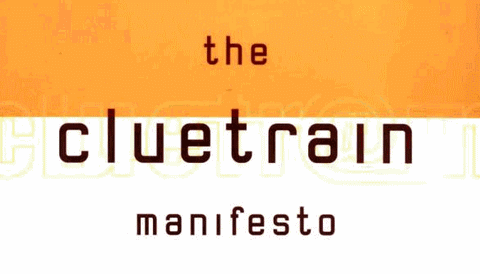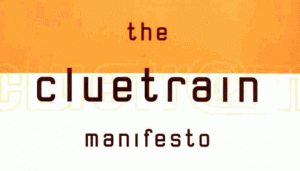What stories is your business or organisation telling? And who is telling it?
There were so damn many ways I could have moved on from the last post I wrote, that it took me a little while to get my head around it. Well, actually, not too long considering I wrote this the very next day; but it was a lot of thought. In that post I banged on about putting people into boxes, about how marketing can’t use its traditional methods, and (vaguely) about how if companies and organisations don’t change it will spell their deaths.
This time I’m going to focus on the conversation. Last time, I wrote:
If you own or run a business or organisation, are you connected to your ‘market’? Is your door (physical orvirtual) open? Do you encourage your employees to bare themselves online and chat about shit?
I doubt it. In fact, I bet you have policies against social networks and internet use in your workplace. I bet the wrath of god himself comes down on employees who engage in “inappropriate” use of technology. Well, pull your head out of your arse.
If you want your name to get around, let your employees engage. Encourage them to talk about the company, its staff, its goings on, its products, online. Draw the line at confidential stuff, obviously, don’t make me labour the point. But everything else? Fair game, baby.
And by “everything else”, I meant literally everything else. Your employees should be talking about the culture at work, their bosses and managers, how the place functions, everything! Managerial styles, dirty laundry, how people relate to each other. If they are encouraged to do this, they will also talk like mad about the positive things.
But you know what the best thing about this is?
It forces you, your organisation, and your full staff to be honest.
Honesty? Wow, there’s a novel notion huh! But I will tell you something: if an organisation and its staff (and management) are honest and open, the ‘market’ that it wants to have a conversation with will flock to it. A lack of openness and honesty comes back to top-down hierarchies that, I’m sorry to point this out to you if you’re a manager who likes your power, won’t be around for long.
Let’s go back to the Cluetrain Manifesto. I’ve stolen these theses from all over the shop, because they make sense when thrown together:
12. There are no secrets. The networked market knows more than companies do about their own products. And whether the news is good or bad, they tell everyone.
53. There are two conversations going on. One inside the company. One with the market.
54. In most cases, neither conversation is going very well. Almost invariably, the cause of failure can be traced to obsolete notions of command and control.
55. As policy, these notions are poisonous. As tools, they are broken. Command and control are met with hostility by intranetworked knowledge workers and generate distrust in internetworked markets.
56. These two conversations want to talk to each other. They are speaking the same language. They recognize each other’s voices.
57. Smart companies will get out of the way and help the inevitable to happen sooner.
Take the key points out of the five above. The first is that there are no secrets. Any information that comes out about a company, a product, a service, or an organisation has the potential to spread like wildfire. I wish Crushtor had already had his piece on Media Viruses done, because that article explains what I mean. Get things moving virally, you find yourself either celebrating or in serious damage-control mode.
The second point is that there are two conversations: one inside an organisation; one outside. The one outside the organisation is the one that the market sees. It is often controlled by media releases, by marketing, by careful publicity and strategy. The one inside the organisation is usually different. If you could hear the conversations inside the organisation I currently work for, it would shock the pants off you. In fact, if the organisation’s market could hear those conversations, that market might well keep its distance.
But guess what? The two conversations ought to be the same. If those notions of ‘command and control’ were dispensed with, the conversations both inside and outside of the market could interact. The openness and honesty that comes from baring everything to all is enormously beneficial.
Celebrities and bands have already discovered this. It is no coincidence that celebrities bare themselves in the most human way on Twitter, engaging with their audiences, telling us about their (often really fucking mundane) lives, sharing their fears and hopes and what really are potential PR disasters. But it works for them. Why? Because they are in an open conversation with their ‘markets’, and the two are ‘speaking the same language’.
Smart organisations, as we see above, get their organisational charts, notions of command and control, staid ways of managing, out of the way really fucking quickly. They let that conversation happen.
Let’s be honest: If you were working in an organisation where everybody, CEO downwards, was encouraged to talk about the company in as open a way as possible, your feelings of being valued, of being trusted, would skyrocket. These are key elements in keeping a workforce loyal and happy; and also of keeping the market open and happy. Engage your market, help it to engage with you and your employees, and throw the doors wide.
Companies and organisations struggle like mad with Gen X and Gen Me employees; but there is no need to. These guys know the real story, the one that you have been trying so damn hard to ignore; but if you continue to ignore it, it will bite you on the arse. What these guys want is conversation.


